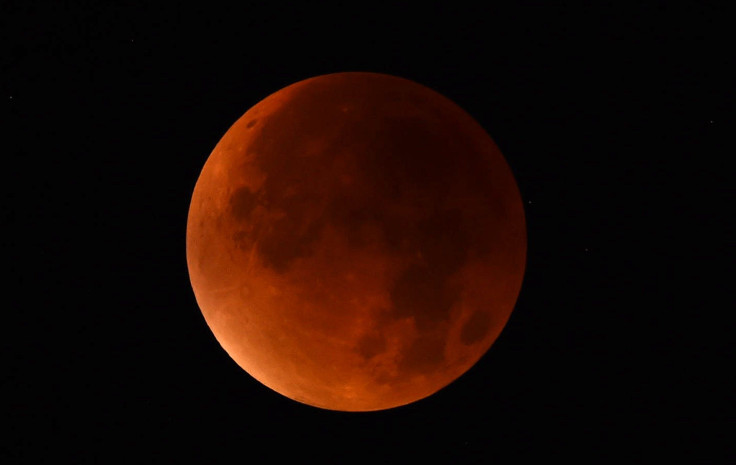Super Blood Wolf Moon: Where To Watch 2019's Only Total Lunar Eclipse
Sky watchers across North America and parts of Europe will get to witness the only total lunar eclipse of 2019 on the night of Jan. 20, and the moon's activity will also produce what is called a "super blood moon eclipse."
For the uninitiated, a super moon is a term used for the moon when it appears larger than usual owing to its relative proximity to Earth. Due to the moon’s reddish appearance during the time, it takes on the blood moniker. Additionally, the full moon in January is called wolf moon, and that name is also being tagged on to the event.
Watchers in the Unites States will be able to witness the spectacle Sunday night from 10:34 p.m. EST, when the eclipse would begin. The total eclipse will start at 11:41 p.m. EST, according to space.com. It is visible from all over the country.

A lunar eclipse occurs when the moon passes through Earth’s shadow and when it moves entirely into the shadow, a total eclipse takes place. The moon takes on a red appearance because the sunlight that ordinarily illuminates its surface is blocked by Earth during an eclipse, and the only way it is still visible is from the light that reaches it through Earth's atmosphere. The atmosphere filters out all but the red wavelengths of light, thus giving the moon a bloody look. During eclipses, which always occur on full moon nights, Earth's only satellite also comes closer to the planet than its usual close approaches.
Since it involves only looking up in the sky to spot the moon, there is no need for any special equipment to enjoy this spectacle in the sky.
Though many in the U.S. had planned to gather at parks and observatories to watch the eclipse, authorities worried about the falling temperature and urged the spectators to watch the event live streamed online.
"It’s not the snow or cloudy skies, but rather the extreme cold, and what we fear may be hazardous travel conditions," Reuters quoted Pennsylvania’s Carbon County Environmental Center as saying.
The Exploratorium in San Francisco is covering the event live on its Facebook page. Similarly, the Virtual Telescope Project is streaming the event live on its website.
Giving tips to watchers, astronomer David Dundee of the Tellus Science Museum in Cartersville, Georgia, told space.com, "Look for the edge of the shadow covering the moon. It will be fuzzy or ragged."
"This is because of the Earth's atmosphere; [it] will cause the edge of the shadow to be ill defined. Plus as the eclipse progresses, you can see the shape of the shadow is round, a consequence of living on a round planet. Finally, the color of the fully eclipsed moon depends on the amount of dust in the Earth's atmosphere and the cloud cover on other parts of the Earth," Dundee explained.
This is the only total lunar eclipse of the year. In fact, the next total lunar eclipse is scheduled for May 26, 2021. However, the next one visible from the U.S. will be in 2022.
© Copyright IBTimes 2024. All rights reserved.





















